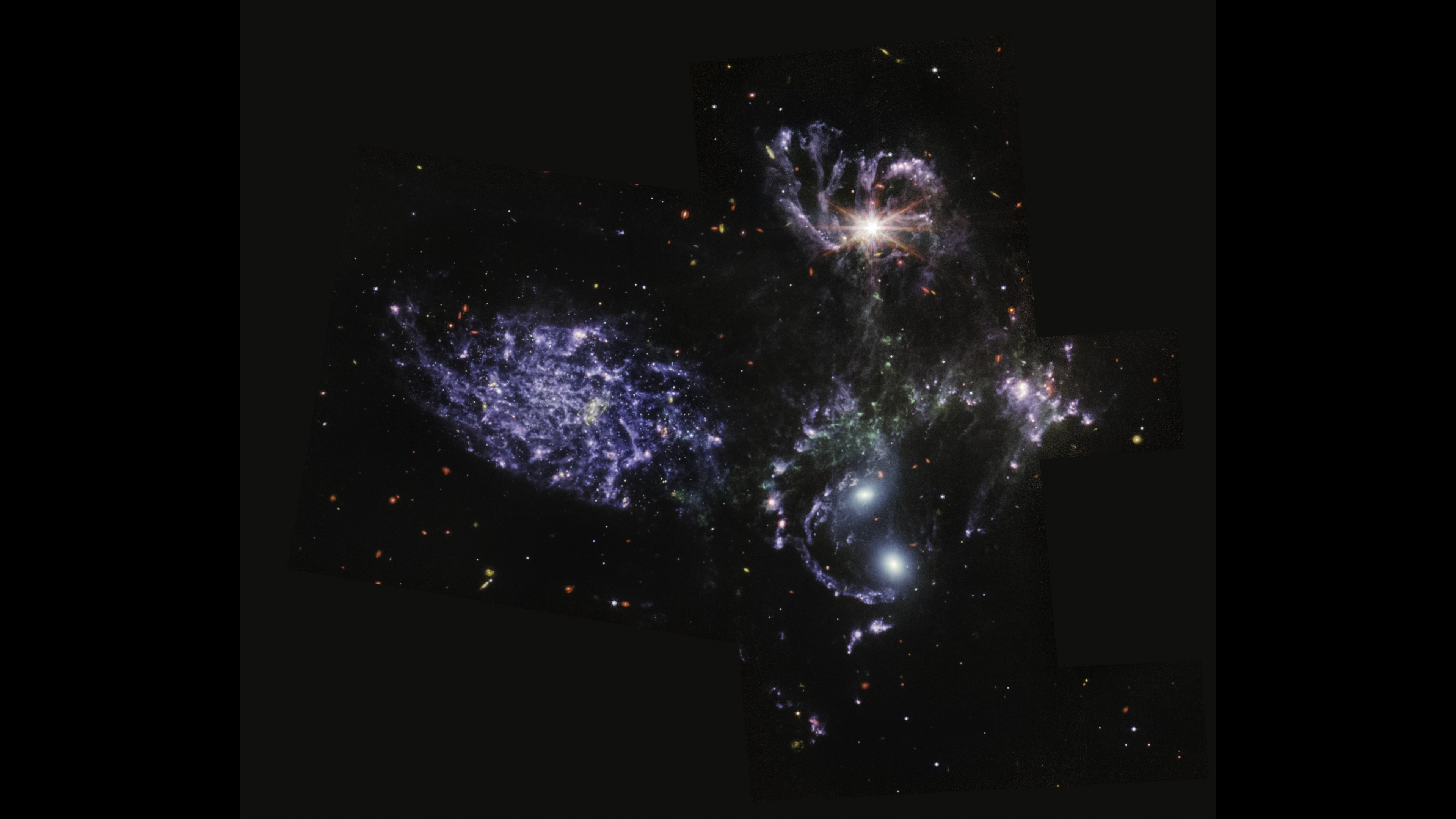Science and emotion meet as astronomers respond to 1st images from James Webb Space Telescope

It was an emotional day for scientists as they shared with the world the first science-quality images from NASA's next-generation observatory.
The James Webb Space Telescope, known as Webb or JWST, launched in December, then spent seven months preparing for operations. All that work is paying off, astronomers said during an event held at NASA's Goddard Space Flight Center in Maryland on July 12 as they discussed the stunning new data, which include crystal-clear images of distant nebulas and galaxies, as well as a detailed look at a hot exoplanet's atmosphere.
"A lot of people sometimes see pictures of space and it makes them feel small," Eric Smith, chief scientist at NASA's astrophysics division and program scientist for JWST, said during the news conference. "When I see these pictures, they make me feel powerful, that a team of people can make this unbelievable instrument to find out things about the universe."
He gestured to the new image of the Carina Nebula, a massive cloud of dust and gas located some 7,600 light-years away from Earth, displayed on a screen behind the speakers. "When we want to, we can do that."
Gallery: James Webb Space Telescope's 1st photos
Live updates: NASA's James Webb Space Telescope mission
The image combines views from two instruments, the Near-Infrared Camera (NIRCam), which maps stars and galaxies, and the Mid-Infrared Instrument (MIRI), which paints the massive cloud of dust and gas where countless new stars are forming in dramatic orange billows.
"We're scientists and these images are used to do science, but when I saw that one in particular, I felt I was going into a gallery," René Doyon, an exoplanet scientist at the University of Montreal in Canada who serves as principal investigator on a different instrument, said during the news conference. "This is an art piece."
Breaking space news, the latest updates on rocket launches, skywatching events and more!
The new images also included an ultradeep infrared view, a portrait of a second nebula called the Southern Ring and a dynamic swirl of galactic activity representing Stephan's Quintet.
But although the news conference was held to mark these new views of the cosmos, astronomers reflected on the emotional impact of all JWST's images to date — even engineering images.
"The first focused images that we took, where they were razor-sharp, that for me was the one where I had the very emotional reaction," Jane Rigby, operations project scientist for JWST at Goddard, said during the news conference. In particular, she remembers seeing the observatory's first view of the standard star that scientists used to measure how much light was streaming through the telescope.
"Personally, I went and had an ugly cry," she said. "It was a combination of giddy in the room — looking at the data, 'Oh my God, this is great' — and then, like, going and having a little sob. Because it works."
Doyon agreed that these are hardly the only JWST images to stir feelings as large as the observatory's mirror.
"We should expect what we saw, but no," he said. "Several times in the last six months, I nearly broke my jaw."
Still, for those less versed in the technical details of observations, it's views like the Carina Nebula image that speak loudest. Amber Straughn, deputy project scientist for communications on the mission, explained how winds from newborn stars sculpted the gas that glows so bright and pointed out brief-lived knots in the nebula near a particularly active star.
"I am blown away by what I'm seeing here," Straughn said.
And, needless to say, there are many more such images to come throughout JWST's tenure, which scientists hope will last 20 years. The celestial shenanigans those images will reveal will unfold just as they would unobserved — but now, a few billion relatively hairless apes will be watching.
"It was always out there," Rigby said of the Carina Nebula. "The universe, it's been out there — we just had to build a telescope to go see what was there."
She echoed Smith's sentiment of awe at not just the images themselves, but also the humans behind the ground-breaking observatory. "[I have] a very similar feeling of maybe, people in a broken world managing to do something right and to see some of the majesty that's out there."
Email Meghan Bartels at mbartels@space.com or follow her on Twitter @meghanbartels. Follow us on Twitter @Spacedotcom and on Facebook.

Meghan is a senior writer at Space.com and has more than five years' experience as a science journalist based in New York City. She joined Space.com in July 2018, with previous writing published in outlets including Newsweek and Audubon. Meghan earned an MA in science journalism from New York University and a BA in classics from Georgetown University, and in her free time she enjoys reading and visiting museums. Follow her on Twitter at @meghanbartels.


